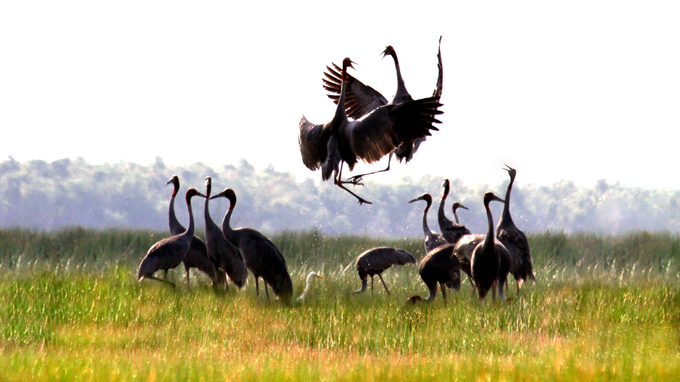A steep decline in the number of red-headed cranes, also known as Sarus cranes, has been recorded since early this year in southern Kien Giang province, the bird’s usual hot spot, compared to a sharp rise in a Cambodian sanctuary.
Only a few members of the bird, scientifically termed “Grus antigone”, a large non-migratory crane found in parts of the Indian Subcontinent, Southeast Asia and Australia, have been spotted in Phu My grassland in the province’s Giang Thanh district.
Meanwhile, hundreds of them have flocked to the 217ha Anlung Pring sanctuary in Kampontrach district in Cambodia’s southern Kampot province, which borders Vietnam’s Kien Giang province.
Half of the sanctuary’s area is salt-affected and thus boasts vast grasslands of “nan kim”, which red-headed cranes typically feed on.
The number of the bird has increased from 20 individuals in 2001 to 309 ones so far. The bird’s high concentration has drawn a large number of tourists.
The tallest of the flying birds (up to 1.8 m (5.9 ft) tall), red-headed cranes are a conspicuous and iconic species in open wetlands. The bird can be distinguished from other cranes in the region by their overall grey color and distinctive red head and upper neck.
The number of red-headed cranes has declined steeply in the past century. It’s estimated that the bird’s current population is a tenth or less of the number which existed in the 1850s.
The bird has been enlisted in Vietnam’s Red Book and the International Union for Conservation of Nature (IUCN)’s Red List of Threatened Species.






















































